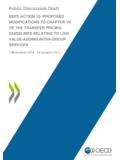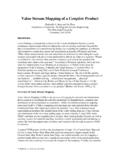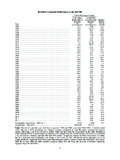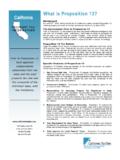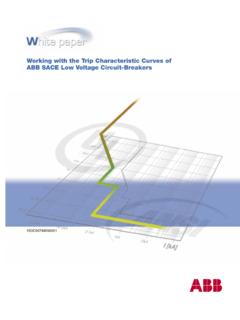Transcription of CDC Response to Advisory Committee on Childhood …
1 CDC Response to Advisory Committee on Childhood Lead poisoning prevention Recommendations in Low Level Lead Exposure Harms Children: A Renewed Call of Primary prevention BACKGROUND In late 2010, the Centers for Disease Control and prevention s (CDC) Advisory Committee for Childhood Lead poisoning prevention (ACCLPP) formed a workgroup to evaluate new approaches, terminology, and strategies for defining elevated blood-lead levels (BLLs) among children. ACCLPP established the ad hoc Blood Lead Level workgroup on November 10, 2010. The charge of this workgroup was to: 1. Recommend how to best replace the term, level of concern, regarding accumulating scientific evidence of adverse effects of BLLs at < 10 g/dL in children. 2. Consider laboratory capability for measuring BLLs in establishing new guidance on Childhood BLLs. 3. Advise ACCLPP on how CDC should communicate advisories to groups affected by policy changes concerning: a.
2 Interpretation of Childhood BLLs and trends in Childhood BLLs over time; b. Screening and follow-up screening intervals; c. Requirements and procedures for notifying parents or guardians concerning BLL test results; and, d. Interventions known to control or eliminate lead exposure. June 7, 2012 NOTE: This version of the CDC Response has been slightly modified from one released on May 13, 2012. This version reflects the verbatim recommendations made by the ACCLPP on January 04, 2012 and has been formatted to link each recommendation to its Response . No other changes were made. On November 16 17, 2011, the ACCLPP met and deliberated on the ad hoc workgroup draft report. On January 4, 2012, the ACCLPP met and a majority approved the report, including the recommendations. In brief, the ACCLPP recommendations include: Elimination of the use of the term blood lead level of concern based on the compelling evidence that low BLLs are associated with IQ deficits, attention-related behaviors, and poor academic achievement.
3 The absence of an identified BLL without deleterious effects, combined with the evidence that these effects appear to be irreversible, underscores the critical importance of primary prevention . This strategy emphasizes preventing lead exposure rather than responding after the exposure has taken place. ACCLPP recommends specific actions that CDC and other local, state, and federal agencies should take to shift priorities to primary prevention and provides guidance to respond to BLLs < 10 g/dL in children. The ACCLPP recommends that CDC collaborate with these and other stakeholders, and provide advice and guidance. ACCLPP also recommends using a reference value based on the percentile of the BLL distribution among children 1 5 years old in the United States (currently 5 g/dL) to identify children with elevated BLLs using data generated by the National Health and Nutrition Examination Survey (NHANES). Approximately 450,000 children in the United States have BLLs higher than this reference value.
4 Additional research is needed to develop and evaluate interventions that effectively maintain BLLs below the reference value in children. Other research priorities should include efforts that better use data from screening programs; develop next-generation, point-of-care lead analyzers; and improve the understanding of epigenetic mechanisms of lead action. Herein we describe CDC s Response to each of the ACCLPP recommendations. The proposed methods to address recommendations are contingent on the availability of resources. In FY 2012, funding for CDC s Childhood Lead poisoning prevention activities was reduced significantly from FY 2011. As a result, funding is not available for state and local Childhood Lead poisoning prevention Programs (CLPPPs). In many instances, these reductions limit CDC s ability to fully implement many of these recommendations in the short term. This draft Response was prepared by CDC s National Center for Environmental Health (NCEH).
5 For the purpose of these responses: Concur We agree, and we have the funding, staff, and control over the means to implement the recommendation. The Response provides potential strategies which are achievable within current FY 2012 or proposed FY 2013 resources. Concur in principle We agree, but we do not have the funding, staff, or control over the means to implement the recommendation. The Response highlights strategies that have been shown to be effective, however a commitment to implement actions cannot be made due to our lack of control over available resources. Nonconcur We disagree with the recommendations and provide the reasons for the disagreement. CDC concurred or concurred in principle with all of the recommendations approved by the ACCLPP. RECOMMENDATIONS I. Recommendation: Based on the scientific evidence, the ACCLPP recommends that the term, level of concern , be eliminated from all future agency policies, guidance documents, and other CDC publications, and that current recommendations based on the level of concern be updated according to the recommendations contained in this report.
6 Concur Specific Means to Address or Implement a. CDC will emphasize that the best way to end Childhood lead poisoning is to prevent, control or eliminate lead exposures. Since no safe blood lead level in children has been identified, a blood lead level of concern cannot be used to define individuals in need of intervention. b. In FY2012, CDC will discontinue using the term level of concern in future publications and replace it with the reference value and the date of the NHANES that was used to calculate the reference value. CDC also will make this standard language available to operating divisions across CDC and use the cross-clearance procedure to ensure that authors adopt this language. c. Publications on the Web site ( ) will use the terminology in place at the time of their publication. The CDC Lead statement 1975 1991 includes an asterisked note that these documents are being kept on this website for historical purposes and are no longer in print.
7 In FY2012, CDC will add the asterisk to the 2005 statement and the footnote will be edited to include the words These documents refer to various blood-lead thresholds and levels of concern for adverse health outcomes in children. This terminology is outdated and readers are referred to the ACCLPP recommendations of 2012. A similar note will be applied to the document, Managing Elevated Blood Lead Levels Among Children (CDC, 2002) that states: This document refers to a blood-lead level of 10 g/dL as the CDC level of concern for adverse health outcomes in children. This terminology is outdated and readers are referred to the ACCLPP recommendations of 2012. However, the 2012 document does not recommend changes to the guidelines for the evaluation and treatment of children requiring chelation (BLLs 45 g/dL) published here. Status: The statement will be placed on no later than two weeks following agency clearance. A joint publication summarizing the ACCLPP recommendations and CDC s Response will be submitted jointly to the Morbidity Mortality Weekly Review and the journal, Pediatrics, no later than May 2012.
8 II. Recommendation: CDC should use a Childhood BLL reference value based on the percentile of the population BLL in children ages 1-5 (currently 5 g/dL) to identify children and environments associated with lead-exposure hazards. The reference value should be updated by CDC every four years based on the most recent population based blood lead surveys among children. Concur in principle Specific Means to Address or Implement In FY12, CDC will: a. Use the reference value in recommendations that involve follow-up evaluation of children after BLL testing. b. Use the reference value as defined to identify high-risk Childhood populations and geographic areas most in need of primary prevention . c. Provide this information, including specific high-risk areas, to a wide variety of federal, state, and local government agencies and nongovernment organizations interested in lead- poisoning prevention . In addition, CDC will update the value every 4 years using the two most recent NHANES surveys.
9 The updated reference value will be posted at and widely distributed through various Web-based LISTSERV sites, pediatric associations, and partners at the federal, state, and local level. Updated reference values will be reported in the National Report on Human Exposures to Environmental Chemicals and other relevant journals. Status: CDC s National Center for Health Statistics (NCHS) will continue to monitor BLLs in the United States and make data tapes available on its Web site for public use at 2-year intervals. CDC publications will use the reference value to provide guidance to clinical health care providers and others as these publications are prepared. Broader dissemination through Web sites, notices to clinical pediatric care providers, and the MMWR will be considered by CDC in the future. III. Recommendation: CDC should develop and help implement a nationwide primary prevention policy to ensure that no children in the live or spend significant time in homes, buildings or other environments with lead-exposure hazards.
10 Concur in Principle Specific Means to Address or Implement CDC recognizes the value of primary prevention . As feasible, CDC will develop strategies and guidelines for primary prevention . Implementation of primary- prevention programs is not currently practicable. Status: CDC may examine the possibilities of working with the Department of Housing and Urban Development (HUD), the Health Resources and Services Administration (HRSA), state and local governments, and philanthropic organizations to identify opportunities for collaboration on primary prevention in the future. IV. Recommendation: Clinicians should be a reliable source of information on lead hazards and take the primary role in educating families about preventing lead exposures. This includes recommending environmental assessments PRIOR to blood lead screening of children at risk for lead exposure. Concur in Principle Specific Means to Address or Implement Although this recommendation is directed to clinicians, CDC may play a supportive role in enhancing the recommendation by working with providers to provide educational material.










